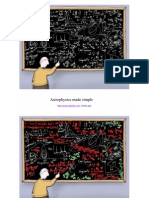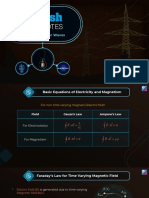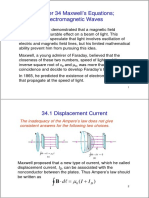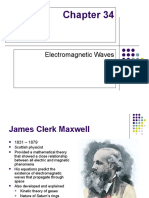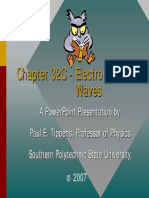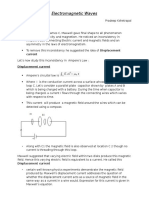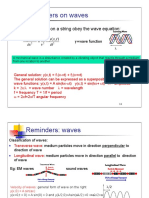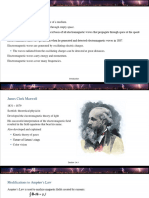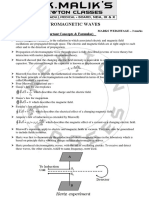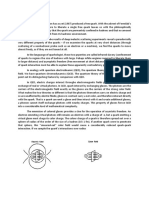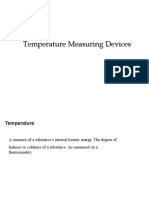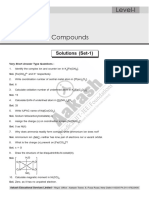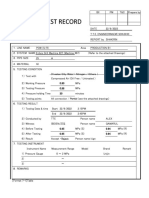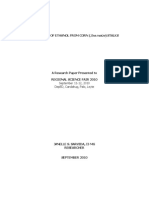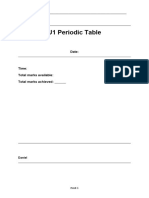0% found this document useful (0 votes)
31 views37 pagesLecture 21
Maxwell's Equations describe the fundamental principles of electromagnetism, detailing how electric and magnetic fields interact and propagate as electromagnetic waves. The document outlines the mathematical formulations of these equations, their implications for wave propagation, energy flow, and energy density in electromagnetic waves. Additionally, it provides examples of calculating field amplitudes and energy densities associated with electromagnetic waves.
Uploaded by
Nano SuyatnoCopyright
© © All Rights Reserved
We take content rights seriously. If you suspect this is your content, claim it here.
Available Formats
Download as PDF, TXT or read online on Scribd
0% found this document useful (0 votes)
31 views37 pagesLecture 21
Maxwell's Equations describe the fundamental principles of electromagnetism, detailing how electric and magnetic fields interact and propagate as electromagnetic waves. The document outlines the mathematical formulations of these equations, their implications for wave propagation, energy flow, and energy density in electromagnetic waves. Additionally, it provides examples of calculating field amplitudes and energy densities associated with electromagnetic waves.
Uploaded by
Nano SuyatnoCopyright
© © All Rights Reserved
We take content rights seriously. If you suspect this is your content, claim it here.
Available Formats
Download as PDF, TXT or read online on Scribd
/ 37



